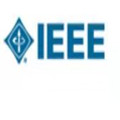Mid-Air Deployment (MAD) of a rotorcraft during Entry, Descent and Landing (EDL) on Mars eliminates the need to carry a propulsion or airbag landing system. This reduces the total mass inside the aeroshell by more than 100 kg and simplifies the aeroshell architecture. MAD's lighter and simpler design is likely to bring the risk and cost associated with the mission down. Moreover, the lighter entry mass enables landing in the Martian highlands, at elevations inaccessible to current EDL technologies. This paper proposes a novel MAD concept for a Mars helicopter. We suggest a minimum science payload package to perform relevant science in the highlands. A variant of the Ingenuity helicopter is proposed to provide increased deceleration during MAD, and enough lift to fly the science payload in the highlands. We show in simulation that the lighter aeroshell results in a lower terminal velocity (30 m/s) at the end of the parachute phase of the EDL, and at higher altitudes than other approaches. After discussing the aerodynamics, controls, guidance, and mechanical challenges associated with deploying at such speed, we propose a backshell architecture that addresses them to release the helicopter in the safest conditions. Finally, we implemented the helicopter model and aerodynamic descent perturbations in the JPL Dynamics and Real-Time Simulation (DARTS)framework. Preliminary performance evaluation indicates landing and helicopter operation scan be achieved up to 5 km MOLA (Mars Orbiter Laser Altimeter reference).
翻译:在火星上进入、潜伏和着陆(EDL)期间,中空部署(MAD)的旋翼飞行器(MAD)使火星上进入、潜伏和着陆(EDL)期间不需要携带推进器或气囊着陆系统,这就消除了携带推进器或气囊着陆系统的必要性,从而将气壳内的总质量减少100公斤以上,并简化了气壳结构。MAD的较轻和较简单的设计很可能会降低与飞行任务有关的风险和费用。此外,较轻的进入质量使得火星高地能够降落在目前EDL技术无法进入的高地。本文为火星直升机提出了一个新的MAD概念。我们建议用一个最低限度的科学有效载荷包在高地上进行相关科学工作。我们建议,在MAD期间,将精度直升机的减速率降低,并有足够的升升至高地的科学载力。我们模拟显示,较轻的气瓶在火星的顶端阶段(30米/秒)结束时,在比其他方法更高的高度上,我们讨论了空气动力动力动力动力动力动力动力、控制、导航和机械上,我们提议在直流机架上,在最后飞行上进行。




